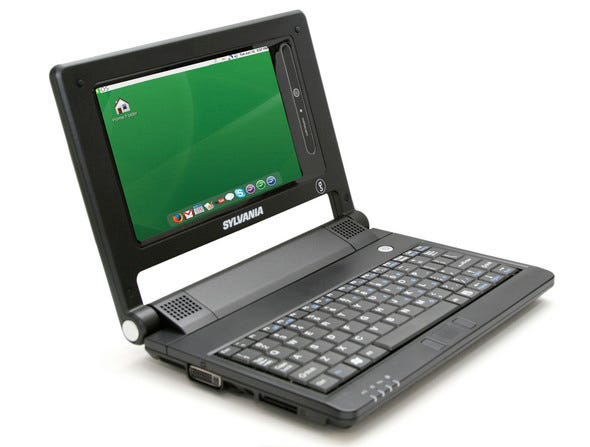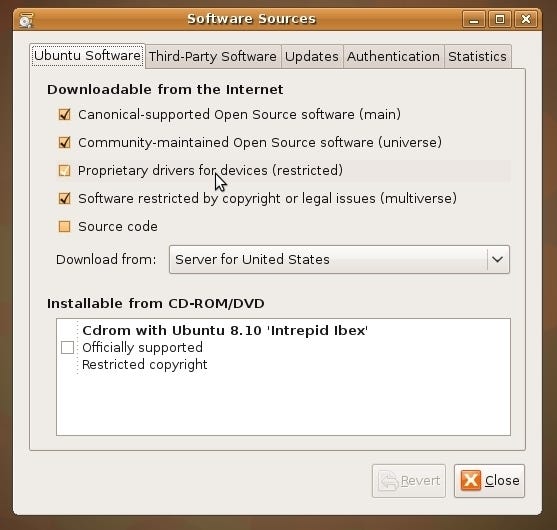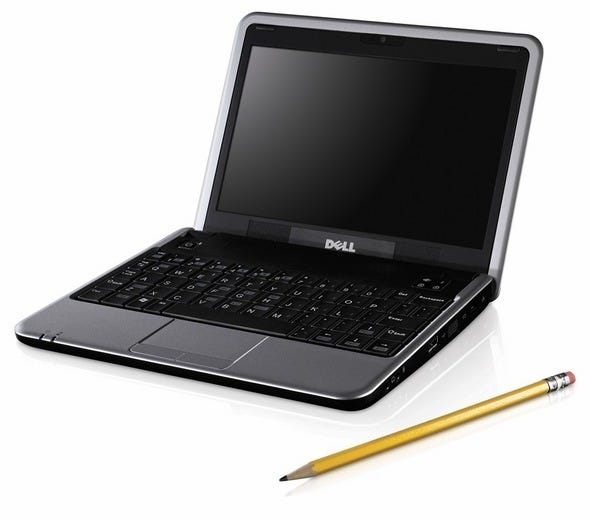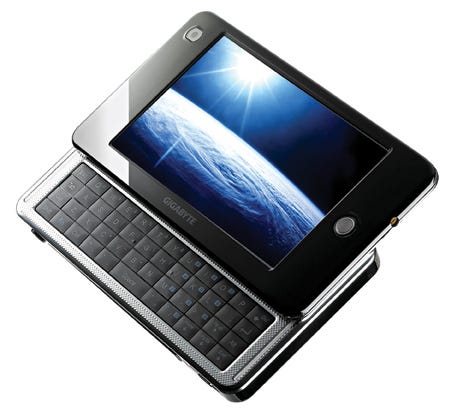Linux's first step must be to own the emerging netbook market, where it is gaining traction among users who live on Web-based apps and aren't married to Windows.

| |
| |
There's little question that Linux on laptops (and on PCs in general) is no longer nearly as complicated or painful as it used to be. The new problem is whether notebook manufacturers are going to readily offer Linux to consumers -- both regular folks on the street and corporate clients -- outside of designated niches.
That said, there is one rapidly emerging bright spot: the new class of "netbooks" -- low-cost notebook machines that use Linux as one of a number of cost-saving measures and which are designed to satisfy relatively undemanding computing needs. Still, even there the competition is fierce, and both the hardware makers and Linux development community will need to strive continuously to make a larger dent in the market.
Right now, Linux won't displace Windows in any significant percentage, at least in markets where Windows already rules the roost. That's part of what makes the netbook market such a fierce battleground: in Microsoft’s eyes (and in the eyes of many Linux users), Linux has a good chance of proving itself there as a prelude to making strides elsewhere.
But it will take more than just making Linux available to people as a hardware preload option to put it on even footing with Windows in the notebook world. The rest of the software in the Linux sphere has to also compete -- either that, or Web-based equivalents of applications routinely used in Windows will have to become preferable alternatives.
These things may be well beyond the ability of notebook makers to influence, but they’re worth keeping in mind.
Hardware And Driver Issues
Obviously there's nothing stopping someone from simply downloading an .ISO of a Linux distribution and installing it on any commodity notebook. Nothing, that is, apart from a) their inclination to do so and b) how well Linux runs there. The good news is that it's no longer a dicey proposition to install on a notebook any of the recent, major Linux distributions for desktops -- Red Hat/Fedora, Ubuntu, SUSE, PCLinuxOS, and so on.
| |
| |
That said, Linux notebook users still face two major hardware-support issues: Windows-only drivers and binary-only (i.e., non-open source) drivers. In a sense, both of these issues are tightly related. The lack of an open source driver doesn't pose an immediate obstacle to usability, but in the long term it can be frustrating since it stymies the kind of community-oriented, bottom-up development that has long been a mainstay of the Linux world.
To the open source community, a closed binary driver for Linux isn't much better than a binary-only Windows driver. And in many cases, a Windows driver is all that's available for many pieces of notebook hardware -- typically networking devices. Those devices can be made to work in Linux using the NDISwrapper utility, which allows Windows network device drivers to be used as-is in Linux. This isn't a long-term solution, though: 64-bit support for NDISwrapper is patchy; no support for Windows Vista (NDIS 6) drivers is available yet; the full range of features on the network card is not always available; and people have reported that using NDISwrapper can sometimes result in system instability.
Linux developers and users typically have to resort to a couple of strategies for dealing with these issues:
1. Working with hardware vendors under non-disclosure agreements. Signing an NDA with a hardware vendor typically means one of two things: the specs for a given piece of hardware are made available only to the developers and not to the general public; or information about the device is to be kept secret until a given date. Novell Linux developer Greg Kroah-Hartmann was able to attract a fair number of hardware vendors in this fashion through the Linux Driver Project.
2. Reverse-engineering devices for which there is no Linux support. Since this requires a good deal of technical skill, it's not something any user can do. (A non-technical user might be able to provide feedback about whether or not a given build of a reverse-engineered driver works, but not much beyond that.) Consequently, it's something that tends to be a small-scale undertaking, and it's generally only resolved permanently when -- or if -- the device manufacturer in question decides it's worth their time and effort to support a community-written driver.
3. Providing community-contributed and -maintained documentation of which devices do work in Linux. Various repositories of this sort of information are available all around the Web, such as the Ubuntu HCL and its partner sites.
4. Encouraging users to support hardware manufacturers that do provide open drivers. In some sense, this tactic is similar to #1, in that it requires people who have the time and dedication to bring their concerns to the company in question. Other people are simply likely to buy hardware that already works with Linux as-is, or find another option entirely -- which, in turn, causes the market for Linux devices to contract slightly.
| |
| |
The Netbook Market
The emerging "netbook" market's shaping up as a place for Linux to have a good deal more free reign, especially among those who aren't married to Windows and use the Web as their desktop. What few desktop applications they use -- instant messenger clients, the browser itself -- are typically available in open source implementations and in the repository for the distribution being used on the device. Here Linux is proving itself to be a good fit, since it can be sculpted to match the exact hardware it's being run on.
That said, Linux on netbooks has its own share of potential thorns. For the end user, the biggest benefit for Linux has traditionally been price, but Windows-equipped netbooks are available at prices that are highly competitive with Linux models. As I write this, Dell's Inspiron Mini 9 with 8 GB of storage is being offered with an Ubuntu variant for $359 -- but the XP-based version of the same system is available for $399. (An Ubuntu-only version with 4-GB storage is available for $349.) What's more, XP itself is getting yet another reprieve from being phased out.
Linux on netbooks also has to be well assembled. If the user has to tweak heavily to get basic things working, they are no better off -- in fact, most likely a good deal worse off -- than they were with Windows. MSI itself experienced a good deal of negative press about the MSI Wind netbook, which shipped with SUSE Linux but had mediocre hardware support out of the box. Problems like these are strong arguments for a reasonably unified Linux base: if netbook manufacturers create custom (shilling for cross-incompatible) versions of Linux for each machine out there, then Linux's appeal in this space will remain marginal.
Widely circulated comments by Andy Tung, MSI's director of sales in the United States, noted that their market research had found a return rate for Linux-powered netbooks that was something like four times the average for Windows-powered machines. Much of this could be attributed to people who buy entirely on the basis of the price and don't pay much heed to the software; i.e., they go in expecting to find Windows and bail immediately when they don't.
Linux netbooks are going to need to compete in ways other than price -- which means, by extension, Linux itself needs to compete in ways other than price. And while people do want alternatives to Windows, they'll choose only if they know precisely what they're getting, and if the benefits are wholly clear.
| |
| |
The Big Vendors
If there's one area where Linux on laptops is lagging most, it's in its availability through major vendors. Big laptop manufacturers still seem to be hesitant to offer Linux as prominently as they do Microsoft Windows. Two factors are at play here: the size of the prospective market and potential user confusion.
Because the existing Linux desktop market share is small, Linux offerings from major notebook vendors still have a tentative, experimental air about them. The word "Linux" doesn't even appear on Dell's homepage, but go to Dell.com/Linux and you'll be redirected to a page where (as of this writing) you can pick one of four notebooks, all running "Ubuntu 8.04 with DVD playback" as the default OS.
Lenovo's notebook offerings only list "Genuine Windows" as the main option, and the company has scaled back Linux as a commercial offering, no longer offering Linux as a preinstalled item (at least in the United States). This isn't to say that Lenovo has abandoned Linux support and development -- just that to them, it isn't worth the effort to provide Linux in the same manner as Windows.
This doesn't mean Linux on brand-name notebooks is out of the question -- just that it's fallen to a bevy of smaller groups, commercial and un-, to accomplish the job and provide support. Canonical offers commercial support for Ubuntu Linux, of course, but it's also possible to go with dedicated and authorized resellers like Emperor Linux who provide brand-name notebooks with your choice of Linux distribution. Ditto Linux Certified, itself an Ubuntu partner.
What could cause this to change? Simply having Linux run well on notebooks isn't enough by itself; what's needed is more hands-on awareness. If people have more direct exposure to quality Linux installations via netbooks, phones, and many other potential target devices -- much as they have had exposure to Windows in many different settings -- Linux may come to be seen less as an exotic oddity and more as a consistently familiar choice.
The Future
Linux as a consumer-level OS has always been a difficult nut to crack, and that's gone for notebook computers as well as desktops.
What has changed recently, however, are the venues it can exercise its strengths in. The netbook market is set to expand and take Linux along for the ride (and, judging from the likes of Android, other forms of mobile computing, too). There's no guarantee that a strong showing in that space, however, will translate into increased growth elsewhere -- but it would be a mistake to count it out completely, and it might turn out to be a solid way to make that happen.
About the Author(s)
You May Also Like














